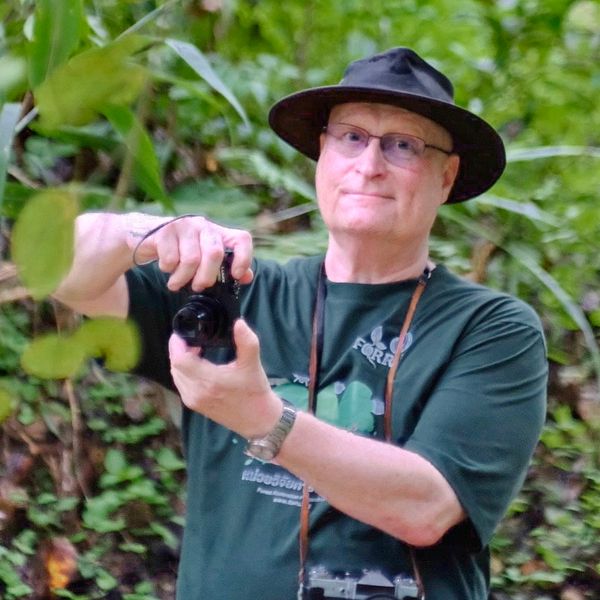First Published in Samara Issue: 32 July - December 2017 (The newsletter of the Millennium Seed Bank Partnership (MSBP)
The UN is calling for the restoration of 350 million hectares of forest to degraded land around the world by 2030, but where will the seeds come from? Targets like WWF’s “Trillion Trees Partnership” will require seed collection on an almost industrial scale. With most countries still lacking native seed supply chains, seed collecting in remnant forest remains essential, but current methods can be restrictive. Collectors must push their way through dense forests, with binoculars pointed aloft, searching for ripe fruits amongst the minute fraction of the forest canopy that is visible from the ground. Even when a fruiting tree is found, the seeds may not be ripe, necessitating a tedious return trip. So, conventional seed collection can be inefficient, unpredictable and consequently expensive.
So why not look for seed trees from above? This has been attempted by scanning high resolution photos, taken from planes 500-1,000 m up, for distinctive crown features to devise simple dichotomous keys (Gonzalez-Orozco, et al., 2010). Other researchers have achieved some success using hyperspectral imagery and lidar (Baldeck, et al., 2015), but such technologies are expensive and the details discernible from planes are limited. With the advent of affordable unmanned aerial vehicles (UAV’s or drones), high-resolution digital cameras can be flown much closer to the forest canopy, so the development of much finer, cost-effective tree identification systems becomes possible.


REFERENCES
- Baldeck, C. A., G. Asner, R. Martin, C. Anderson, D. Knapp, J. Kellner, S. Wright, (2015). Operational Tree Species Mapping in a Diverse Tropical Forest with Airborne Imaging Spectroscopy. PLoS ONE 10(7): e0118403. doi:10.1371/journal.pone.0118403 Gonzalez
- Orozco, C., M. Mulligan, V. Trichon & A. Jarvis, (2010). Taxonomic identification of Amazonian tree crowns from aerial photography. Applied Vegetation Science. 13: 510–519, DOI: 10.1111/j.1654-109X.2010.01090.
Read the outcome of Krishna Rai's project here: "Locating and identifying seed tree species for forest restoration in northern Thailand using an unmanned aerial vehicle" .


